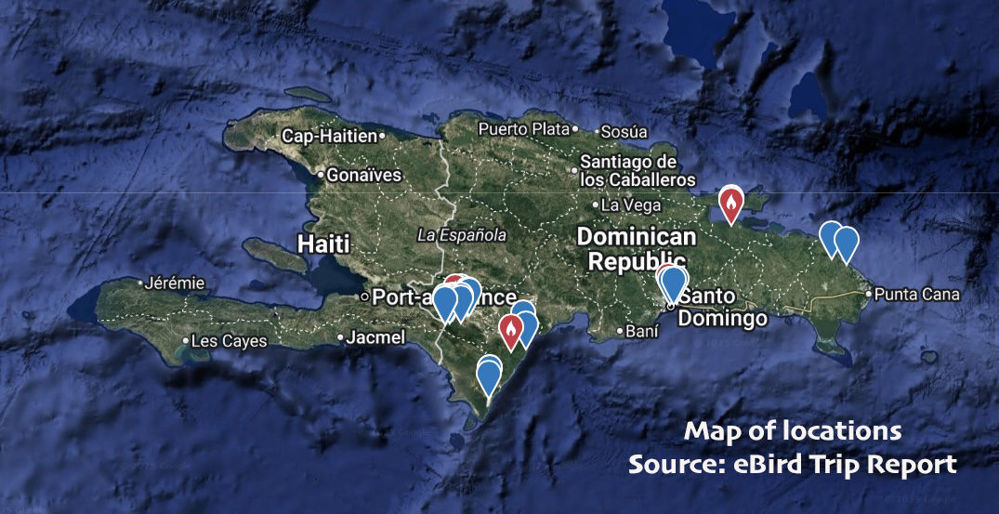Departure Date: April 4 - 12, 2025
Compiled By: David Ascanio
Trip Leaders: David Ascanio, Local Leader
Toll Free: 800.328.8368
Phone: 512.328.5221
The Dominican Republic 4/4/2025-4/12/2025

The warm breeze of the Caribbean welcomed us to a unique birding adventure, one that would take us to dry forest, freshwater and brackish wetlands, cloud forest, and desert scrub. The single island of Hispaniola preserves examples of all these habitats, and that is why we came to the Dominican Republic, one of the two countries sharing the island.
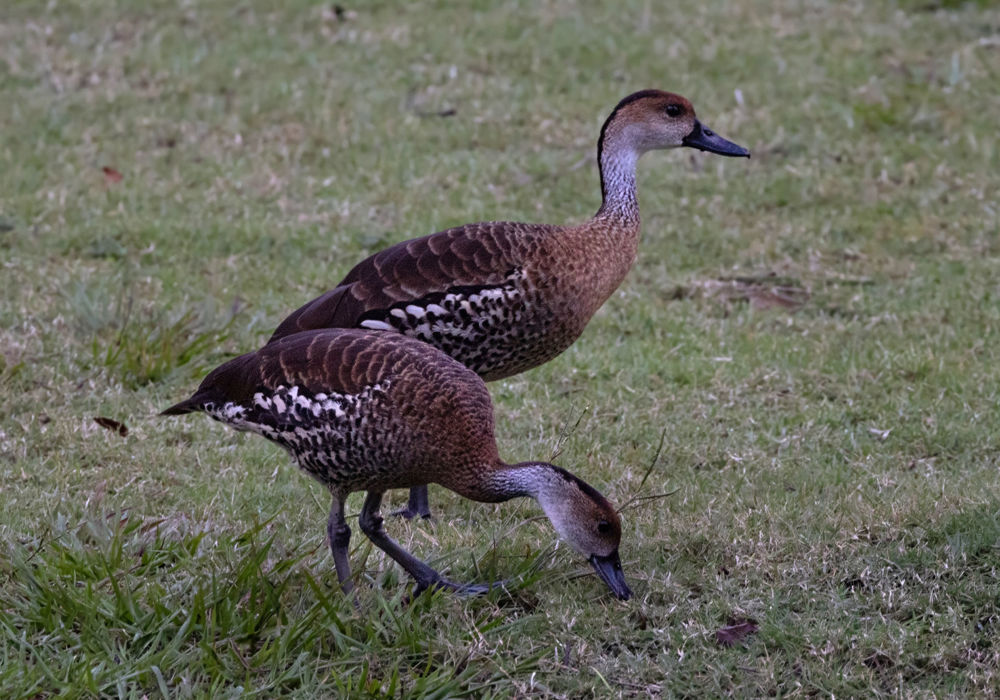
West Indian Whistling-Duck, Dendrocygna arborea © David Ascanio
Once in Santo Domingo, we gathered in the hotel garden to enjoy the arrival of more than a hundred Hispaniolan Parakeets coming to roost. An ancestral parakeet, from Middle or South America, colonized the island and then followed its own evolutionary track. The result is a massive population that seems to adapt well to urban habitats.
The next morning found us in Santo Domingo's Botanical Gardens, where we were welcomed by West Indian Whistling-Ducks and a flashy Vervain Hummingbird. From Santo Domingo, we proceeded to the southwest corner of the country, to Barahona and the community of Duvergé, where we explored the magical cloud forest and its amazing number of Caribbean endemics and specialties. Our early departure brought us to the Haitian border before dawn. Hispaniolan Nightjars were calling, and after a quick breakfast, we found that just walking along the road offered non-stop birding.

La Selle Thrush, Turdus swalesi © David Ascanio
Normally secretive, a La Selle Thrush was found inspecting the pebbles in search of insects and worms. A Hispaniolan Trogon was discovered perched on a low branch. On the other side of the road, the reclusive Western Chat-Tanager appeared, while just below it, the cute Narrow-billed Tody drew our attention (we fell in love with this bird). A Hispaniolan Emerald foraged in tiny flowers while the endemic White-fronted Quail-Dove paced the roadside and an Antillean Piculet blasted us with its unique voice.
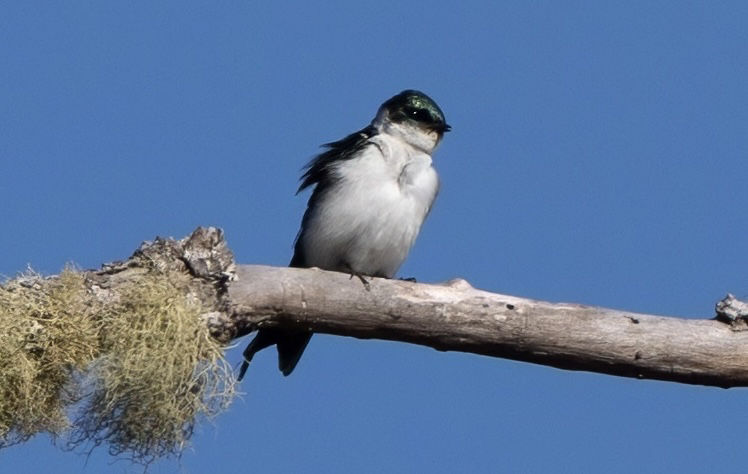
Golden Swallow, Tachycineta euchrysea © David Ascanio
The endless birding continued with a perched Golden Swallow , a singing Rufous-throated Solitaire, and both White-winged and Green-tailed warblers, likewise endemic to Hispaniola. What happened next was even better: a wonderful Bay-breasted Cuckoo appeared on an exposed branch, remaining there for few seconds. This experience left us feeling as if we were walking on air in the beautiful mountain forest!
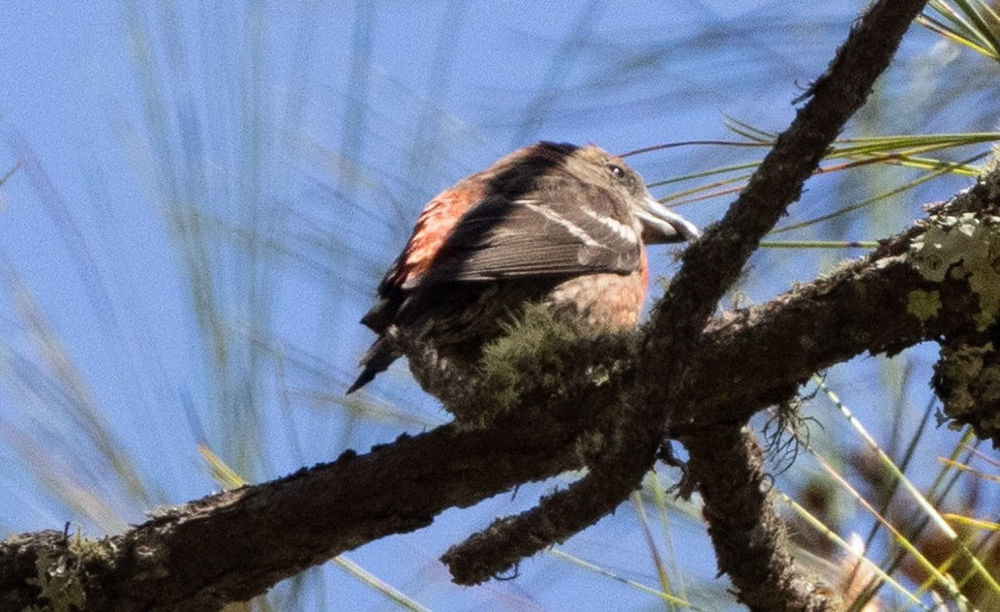
Hispaniolan Crossbill, Loxia megaplaga © David Ascanio
Back in the lowlands, we stopped in a patch of relict pines, a habitat that was widespread during the last ice age and today hosts another island endemic, the Hispaniolan Crossbill. It didn’t take long for us to find one, perched on a horizontal branch where everyone could enjoy a scope view. Farther down, we also added Hispaniolan Pewee, Black-crowned Palm-Tanager, and Hispaniolan Euphonia, rounding off a successful day in the Sierra de Bahoruco—and perhaps the best first day ever for a VENT tour here!
The next morning, before light, we briefly enjoyed a Least Pauraque before getting wonderful views of the Northern Potoo. Soon after sunrise,our search rewarded us with Broad-billed Tody, Hispaniolan Amazon, Flat-billed Vireo, and Stolid Flycatcher. Capping off the morning with superb views of Antillean Siskin, we then made a second try at the Palm Crow in Lago Enriquillo, this time successfully.
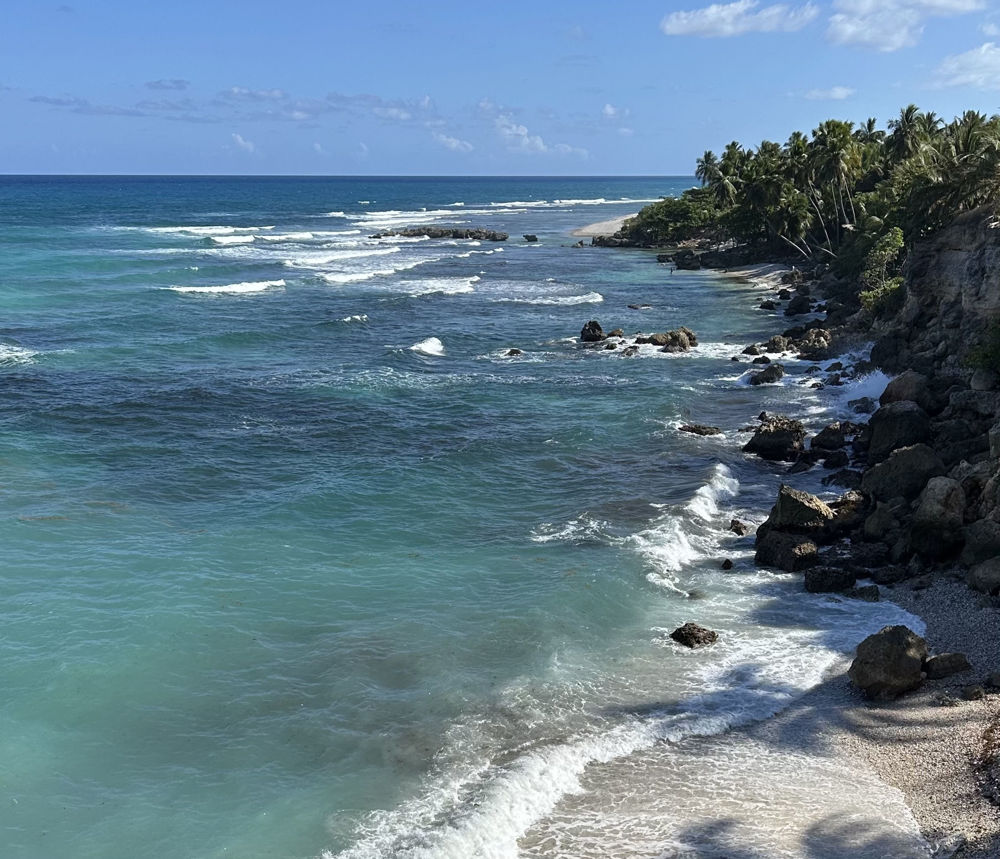
Caribbean Sea © David Ascanio
We moved on then to the beautiful southern coast of the Dominican Republic, enjoying wonderful views of the Caribbean Sea on our way to explore another part of the Sierra de Bahoruco, where we would search for the Eastern Chat-Tanager. Armed with a picnic breakfast, we made a slightly less early start to a smaller patch of forest, one obviously subjected to slash-and-burn agricultural practices. Here, in the small community of Cachote, we saw the Eastern Chat-Tanager, thanks to the knowledge of Mr. Ramon, a local expert.
We finished the day in a completely different habitat, Laguna Oviedo, where we honed our shorebird identification skills, located a single American Flamingo, and were delighted by superb views of Black Tern. We also had an incredible encounter with Rhinoceros Iguanas, a surreal experience.
For the last part of the tour, we drove back to Santo Domingo and on to the Samana Peninsula to look for one of the most threatened birds of prey in the Americas, the Ridgway’s Hawk. Juan Cespede, the local expert, led us to the place where a pair was nesting, and we enjoyed views of the birds perched and in flight.
At this point, we had seen all of Hispaniola's endemic birds but two. One was the Gray-crowned Palm-Tanager, restricted to Haiti and now impossible to see. For the other, we took a walk on our last evening through the sporadic rain in search of the Ashy-faced Owl. Juan had warned us that the bird was difficult to find this year,

Broad-billed Tody, Todus subulatus © David Ascanio
but we were determined. And now, on our second attempt, a single individual flew into a nearby tree, where we all saw it well. Cowabunga! With that, we had seen all of our most-wanted species, and we left the Dominican Republic with a different perspective on what is not just a beach destination, but a fascinating country filled with unimaginable habitats, wonderful people, and unforgettable birds.
I want to thank you for joining us on this wonderful island. Our gratitude goes to Rafael and Iván, too, amazing colleagues who shared with us their passion for the avifauna of Hispaniola. A final word of appreciation goes to the one and only Mike, whose assistance in the field, driving skills, and endless stories made the tour both funnier and safer.
We look forward to seeing you again!
A complete list of the birds recorded on our trip can be found at: ebird.org/tripreport/350385
Tour photo album: flickr.com/photos/davidascanio/albums/72177720326829653
View David Ascanio's upcoming tour schedule.
We invite you to join us in other destinations, all equally interesting and beautiful, but remarkably different from the Greater Antilles.
Brazil: Pantanal, Into the Heart of Jaguarland
2024 photo album: flickr.com/photos/davidascanio/albums/72177720322520712
2024 eBird trip report: ebird.org/tripreport/275522
Colombia: Adventure in the Llanos of the Orinoco
2025 photo album: flickr.com/photos/davidascanio/albums/72177720323445502
2025 eBird trip report: ebird.org/tripreport/322702
The Amazon Cruise: A Comprehensive Journey into the Greatest Biome on Earth!
2025 photo album: flickr.com/photos/davidascanio/albums/72177720308130339
2025 eBird trip report: ebird.org/tripreport/326351
Costa Rica: A Relaxed and Easy Tour
2022 photo album: flickr.com/photos/davidascanio/albums/72177720304189529
2024 eBird trip report: ebird.org/tripreport/294341
ITINERARY
April 4, 2025. Arrival. Night Santo Domingo.
April 5, 2025. Santo Domingo Botanical Gardens. Drive to Barahona. Night Duverge.
April 6, 2025. Sierra de Bahoruco National Park. Night Duverge.
April 7, 2025. Puerto Escondido and Lago Enriquillo. Night El Quemaito.
April 8, 2025. Cachote and Laguna Oviedo. Night El Quemaito.
April 9, 2025. Cachote. Drive to Santo Domingo. Night Santo Domingo.
April 10, 2025. Colonial Zone of Santo Domingo. Drive to Samana Bay. Night Cano Hondo.
April 11, 2025. Los Haitises National Park. Night Cano Hondo.
April 12, 2025. Drive to Punta Cana. Departure.
